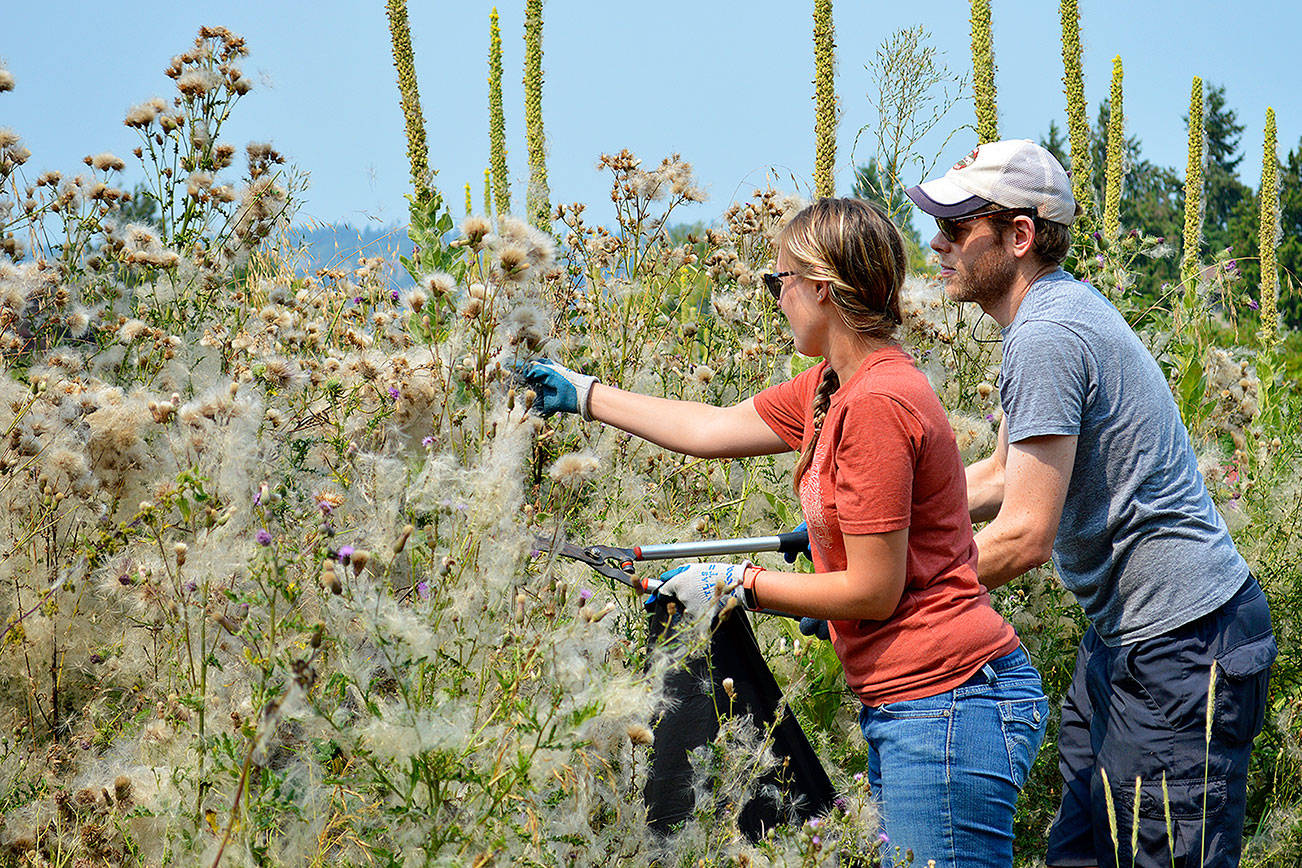On Wednesday afternoon, around 50 REI employees trudged through high grass and thistles to help the Whidbey Camano Land Trust clear invasive plants near Dugualla Bay.
The volunteers came to the island from the REI in Kent on a company-sponsored camping trip. It is common for these types of trips to include partnering with a local organization to do an environmental service project, said Greg Gausewitz, a product sustainability manager for REI.
“It’s always cool to see what we can do,” he said.
The land trust planted 3,500 native species at the Dugualla Bay site in the spring, and now are working to ensure invasive species don’t overrun the young plants. Kyle Ostermick-Durkee, a steward assistant with the land trust, said if the area isn’t properly maintained, then plants such as Canada thistle could take over nearly the whole area within a few years.
“It’s a big task for our volunteers,” Ostermick-Durkee said.
Typically, three or four volunteers from the land trust will work on the site with power tools, he said. When he heard how many volunteers from REI would be coming, Ostermick-Durkee said he knew he wanted them to work on this site.
“A really large work party is even better than what three or four people can do with power tools,” he said.
The site is owned by the homeowners’ association Dugualla Community Inc. The land trust and the association have a conservation easement, which is a legal agreement that removes the development rights of the area and places restrictions to protect the wildlife. Per the agreement, the land trust takes care of the site at its own expense to improve the habitat for animals such as salmon, herrons and coyotes.
Although the native plants are growing well, Ostermick-Durkee said there is still a lot of work to be done.
“The planting is going well, but you have to stay on it, otherwise it won’t amount to much,” he said. “It takes a lot of work to see a restoration through.”



